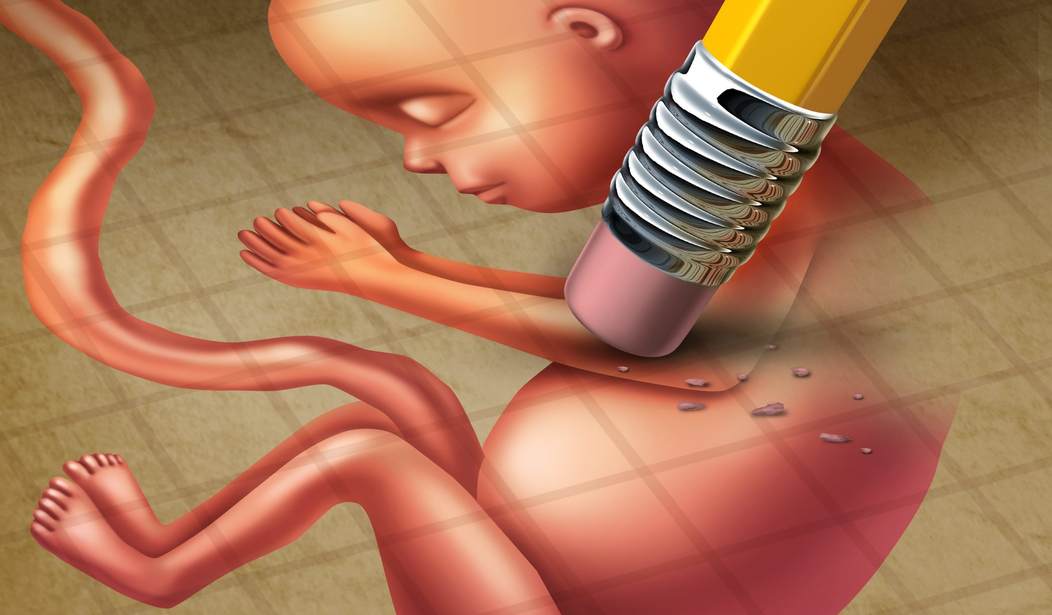The venerable Atlantic has already taken a lot of heat for this disgraceful article (see the world-class appendage of corrections at the end) but it’s worth taking a brief look at to illustrate just how morally awful the pro-abortion crowd has become:
One of the first measures that Republicans in the 115th Congress proposed was the “Heartbeat Protection Act.” On January 11, a group led by Steve King of Iowa introduced a bill that would require doctors nationwide to “check for a fetal heartbeat” before performing an abortion, and prohibit them from completing the procedure if they found one. In December, Republicans in the Ohio state legislature put forth a similar measure. Governor John Kasich vetoed it, observing that such a law would almost certainly be struck down as unconstitutional, but approved a 20-week abortion ban.
Opponents of the heartbeat bills have pointed out that they would eliminate abortion rights almost entirely—making the procedure illegal around four weeks after fertilization, before many women realize that they are pregnant. These measures raise even more elementary questions: What is a fetal heartbeat? And why does it matter?
The idea would have been unthinkable before the advent of a technology developed in 1976: real-time ultrasound. At six weeks, the “heartbeat” is not audible; it is visible, a flickering that takes place between 120 and 160 times per minute on a black-and-white playback screen. As cardiac cells develop, they begin to send electrical pulses that cause their neighbors to contract. Scientists can observe the same effect if they culture cells in a petri dish.
Doctors do not even call this rapidly dividing cell mass a “fetus” until nine weeks into pregnancy. Yet, the current debate shows how effectively politicians have used visual technology to redefine what counts as “life.”
I think you can already see where this is heading. True to cultural-Marxist form, the author is prepared to argue that black is really white, in is really out, and up is really down. And therefore, a fetus is not really a human being and, in fact, its heartbeat is an illusion. Dr. Gosnell, call your office:
Since the mid-1990s, opponents of abortion have deployed ultrasound in their attempts to restrict abortion access. Five states have enacted “informed consent” laws, which require doctors to show their patients ultrasound images, and in some cases to describe the images, before performing an abortion. Two of those laws have been struck down by state courts. Twenty other states require a doctor to at least offer to show a woman seeking an abortion ultrasound.
These measures are based on two assumptions: First, that an ultrasound image has an obvious meaning. Second, that any pregnant woman who sees an ultrasound will recognize this meaning. Science does not bear either assumption out.
Read this drivel at the cost of your sanity. But don’t miss this corrections!
* This article originally stated that there is “no heart to speak of” in a 6-week-old fetus. In fact, the heart has already begun to form by that point in a pregnancy. The article also originally stated that an expectant mother participating in a study decided to carry her pregnancy to term even after learning that the fetus was suffering from a genetic disorder, when in fact the fetus was only at high risk for a genetic disorder. The article originally stated, as well, that Bernard Nathanson headed the National Right-to-Life Committee and became a born-again Christian. Nathanson was active in, but did not head the committee, and was never a born-again Christian, but rather a Roman Catholic. The article originally stated that many doctors in 1985 claimed fetuses had no reflexive responses to medical instruments at 12 weeks. Finally, the article originally stated that John Kasich vetoed a bill from Indiana’s legislature, instead of Ohio’s legislature, after which the article was incorrectly amended to state that Mike Pence had vetoed the bill. We regret the errors.
Sickening. But that’s what passes for advocacy “journalism” these days.









Join the conversation as a VIP Member